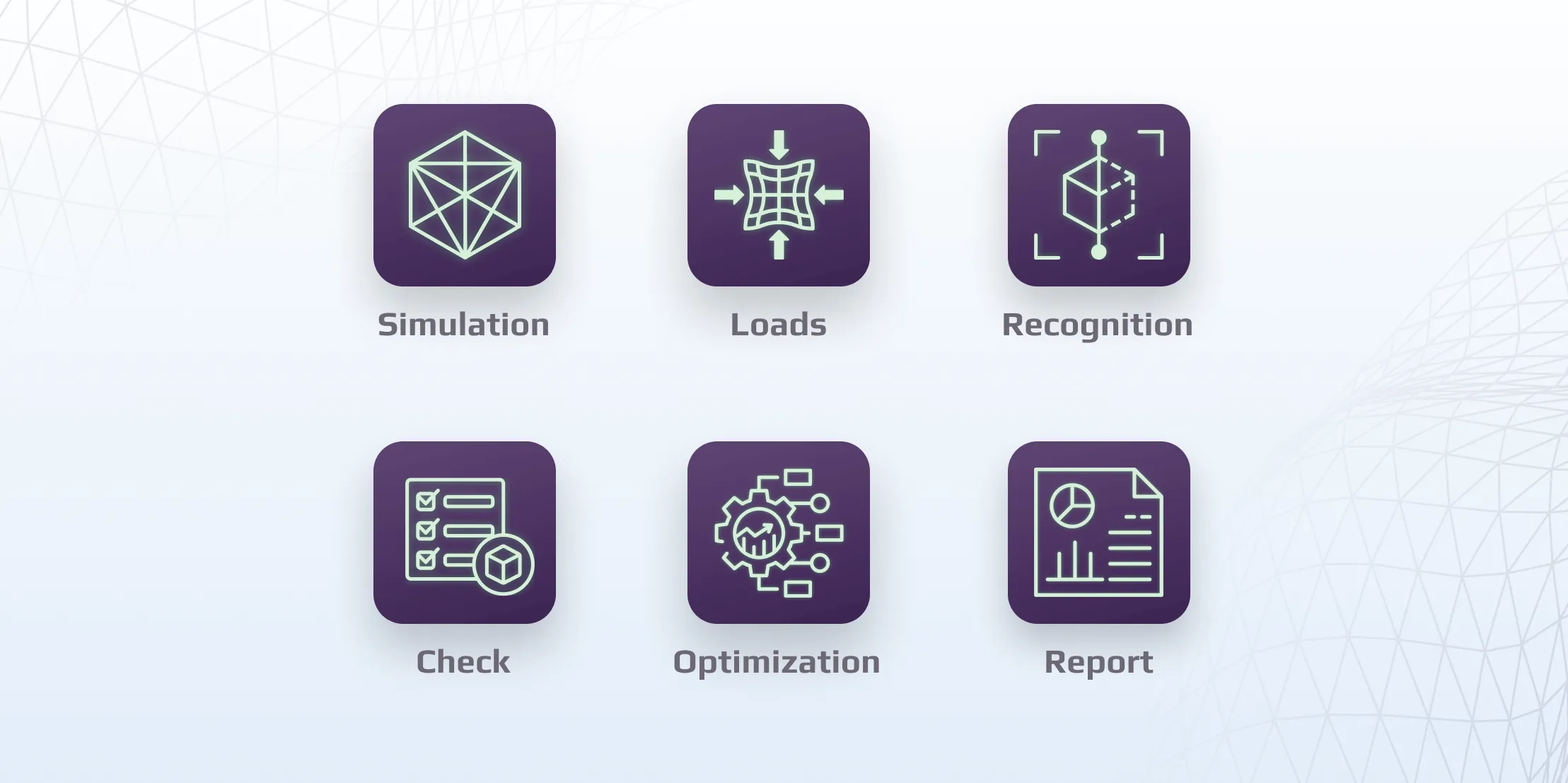Section 9 checks are fully implemented.
DNV OS-C101-LRFD Weld Strength (2011) defines verification criteria for weld connections in offshore steel structures. Based on Section 9 of the April 2011 edition, this implementation supports the assessment of weld geometry, throat stress, and utilization using LRFD principles.
SDC Verifier applies checks to all welds automatically and separates them into:
Key configurable parameters include:
The weld stress is calculated using Von Mises theory, based on the actual weld throat size and orientation. The check assumes 0° weld angle for strength comparison, aligning with DNV’s simplification.

Work directly within Ansys, Femap, or Simcenter 3D without switching platforms.
Instantly identify beams, plates, welds, and joints in your FEA model.
Perform code checks with built-in support for ABS, AISC, Eurocode, API, and more.
Detect overstressed areas and refine your design with data-driven decisions.
Generate customizable, fully traceable reports with all calculations and references.
ABS Standards
AIJ Standards
AISC Standards
API Standards
ASME Standards
Australian Standards
British Standards
Bureau Veritas Standards
DIN Standards
DNV Standards
DVS Standards
EN 13001 Standard
Eurocode 3
Eurocode 9
F.E.M. 1.001
FKM Standard
IACS Standards
ISO
Lloyd’s Register (LR) Standards
NORSOK Standards
VDI Standards